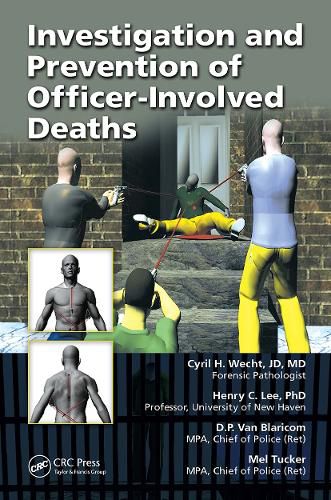Readings Newsletter
Become a Readings Member to make your shopping experience even easier.
Sign in or sign up for free!
You’re not far away from qualifying for FREE standard shipping within Australia
You’ve qualified for FREE standard shipping within Australia
The cart is loading…






Each year, too many law enforcement officers die in the line of duty and too many people are killed by the police. Yet, can any of these deaths be avoided? To answer this we must investigate the nature and causes of these deaths in an unbiased and objective manner to highlight and expose weaknesses in policy that can be amended through more rigorous, enlightened, and culture-sensitive training.
Examining hypothetical cases drawn from the most prevalent and typical officer-involved deaths in recent years, Investigation and Prevention of Officer-Involved Deaths reviews the circumstances, relevant discussions, and critical issues for each case type wherein law enforcement officers have had to respond outside of their usual and trained experience and where the final outcome was the death of either the suspect, an innocent bystander, or the officer.
With a focus on crime scene investigation and the collection and preservation of the relevant forensic evidence, the book outlines appropriate crime scene procedures for each situation and lists potential categories of forensic evidence to be searched for, collected, and submitted to the forensic laboratory for analysis. The authors discuss postmortem protocols, including autopsy reports, toxicological analyses, and other appropriate investigative findings. They then examine policy and training protocols for each, look at the use and potential benefit of less-lethal weapons, and pose the critical question of "what would you do if you were the police officer."
Through the serious study of each of the categories presented in this book, police officers and other groups of law enforcement officials can more fully comprehend and appreciate the societal significance of such cases. The more aware, sensitive, and well-educated are officers of the law, the more dignified, humane, and safe are the communities they are sworn to serve.
$9.00 standard shipping within Australia
FREE standard shipping within Australia for orders over $100.00
Express & International shipping calculated at checkout
Each year, too many law enforcement officers die in the line of duty and too many people are killed by the police. Yet, can any of these deaths be avoided? To answer this we must investigate the nature and causes of these deaths in an unbiased and objective manner to highlight and expose weaknesses in policy that can be amended through more rigorous, enlightened, and culture-sensitive training.
Examining hypothetical cases drawn from the most prevalent and typical officer-involved deaths in recent years, Investigation and Prevention of Officer-Involved Deaths reviews the circumstances, relevant discussions, and critical issues for each case type wherein law enforcement officers have had to respond outside of their usual and trained experience and where the final outcome was the death of either the suspect, an innocent bystander, or the officer.
With a focus on crime scene investigation and the collection and preservation of the relevant forensic evidence, the book outlines appropriate crime scene procedures for each situation and lists potential categories of forensic evidence to be searched for, collected, and submitted to the forensic laboratory for analysis. The authors discuss postmortem protocols, including autopsy reports, toxicological analyses, and other appropriate investigative findings. They then examine policy and training protocols for each, look at the use and potential benefit of less-lethal weapons, and pose the critical question of "what would you do if you were the police officer."
Through the serious study of each of the categories presented in this book, police officers and other groups of law enforcement officials can more fully comprehend and appreciate the societal significance of such cases. The more aware, sensitive, and well-educated are officers of the law, the more dignified, humane, and safe are the communities they are sworn to serve.